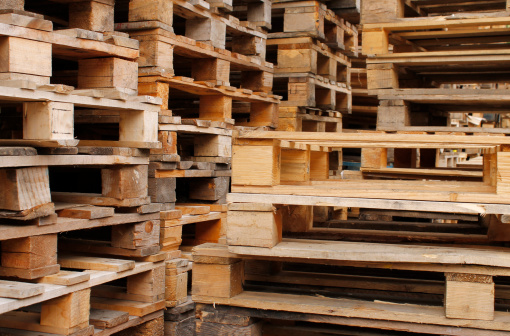ISPM15 certification is an international regulation. There is no comparable domestic standard to regulate the travel of pallets across the country. This is a cause for concern as many pallets are being re-used and recycled within the domestic supply chain.
Why is this an issue? Quarantine concerns are a major factor for pallet manufacturers, however not all pallet providers are required to exercise the same precautions when it comes to this issue. For example in some areas, pallets are required to go through a treatment process in order to ship outside a particular quarantined area, whereas in other areas this same standard has not been made mandatory. The variance in these regulations therefore creates an advantage for pallet manufacturers who are not required to exercise the same degree of caution when shipping to outside areas.
Additionally the firewood industry is a completely unregulated industry that raises – and contributes to – the same quarantine concerns. Without domestic legislation, pests spread without any method of tracking or controlling the origin. In order to establish an even playing field for all who hold a stake in controlling invasive species, consistent regulations should be a broader priority.
An excellent example of the devastating effects of interstate pest travel can be seen in the current demise of the ash tree population. The Emerald Ash Beetle (EAB) is an invasive wood-boring beetle native to China and eastern Asia that has caused the decline of tens of millions of ash trees in North America. The United States Department of Agriculture Domestic (USDA) Animal and Plant Health Inspection Service (APHIS) regulates and applies quarantines to geographical areas of the country to contain the spread of pests. APHIS will not allow EAB regulated articles to exit federal quarantine boundaries without federal permits. Specifically, “the interstate movement of EAB-host wood and wood products is strictly regulated in this method”. EAB populations are being constantly surveyed by the government to contain and control the spread. Three-dimensional purple triangles are used as traps with a lure system that captures EABs and surveys the beetle population in specific geographic regions.
Federal quarantine boundaries have been erected in several States under the Cooperative Emerald Ash Borer Project. States affected by EAB include: Michigan, Colorado, Connecticut, Georgia, Illinois, Indiana, Iowa, Kansas, Kentucky, Maryland, Massachusetts, Minnesota, Missouri, New Hampshire, New York, North Carolina, Ohio, Pennsylvania, Tennessee, Virginia, West Virginia, Wisconsin and the Canadian provinces Ontario and Quebec.
The primary concern for EAB is firewood. The USDA urges people not to take firewood across state lines and to only use USDA or State certified treated and labeled firewood. However, other than providing education there is currently no method of regulating the movement of firewood within the United States.
Despite the obvious need, there has been hesitation towards creating an ISPM15 domestic standard for the pallet industry. There is no consistent enforcement with the exception of quarantine zones in relation to a situation like the EAB and it’s difficult to say how effective the zones are when unregulated wood is constantly travelling across the country. To learn more visit the APHIS website.





